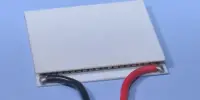Quantum dots are extremely small semiconductors that are just a few billionths of a meter in size. Researchers have developed smart white light devices made of quantum dots that are color-controllable, more efficient than standard LEDs, and capable of dynamically recreating daylight conditions in a single light.
The next-generation smart lighting system was created by researchers from the University of Cambridge by combining nanotechnology, color science, cutting-edge computer approaches, electronics, and a novel fabrication process.
The researchers discovered that they could replicate daylight more faithfully by using more than the three fundamental lighting colors included in conventional LEDs. Early evaluations of the new design demonstrated outstanding color reproduction, a broader operational range than present smart lighting technology, and a wider spectrum of white light customizing. The journal Nature Communications reports the findings.
Given that ambient light availability and features are related to wellbeing, the broad adoption of smart lighting systems which can adjust to individual moods may benefit human health.
Additionally, circadian rhythms, which control the daily cycle of sleep and wakefulness, can be used to control smart lighting such that it is reddish-white in the morning and evening and bluish-white during the day.
A space is said to have acceptable levels of visual comfort when it has enough natural or artificial light, good glare management, and views of the outside. The quality of color rendering affects visual comfort in indoor settings with artificial light.
Since illumination determines an object’s color, smart white lighting must precisely reflect the color of the objects it surrounds. The method used by modern technology to accomplish this is the simultaneous use of three separate light colors.
This is a world-first: a fully optimised, high-performance quantum-dot-based smart white lighting system. This is the first milestone toward the full exploitation of quantum-dot-based smart white lighting for daily applications.
Professor Jong Min Kim
Since the 1990s, quantum dots have been researched and developed as light sources because of their excellent color purity and tunability. They exhibit great color performance in both wide color controllability and high color rendering capabilities because of their distinctive optoelectronic features.
The Cambridge researchers created an architecture for the next-generation QD-LED-based smart white lighting system. They brought together material-level parameter extraction, device-level optoelectronic simulation, and system-level color optimization.
Along with a novel approach for charge transport and light emission modeling, the researchers created a computational design framework from a color optimisation methodology used for neural networks in machine learning.
The QD-LED system employs more main colors than just the usual red, green, and blue to more closely resemble white light. The researchers were able to get around some of the practical restrictions of LEDs and achieve the emission wavelengths they needed to test their hypotheses by selecting quantum dots of a specified size between three and 30 nanometers in diameter.
The team then developed a novel device architecture for white lighting based on QD-LEDs to validate their idea. Excellent color rendering, a broader operating range than existing technology, and a wide range of white light shade customization were all demonstrated in the test.
Comparing the Cambridge-developed QD-LED system to contemporary LED-based smart lights, which have a CCT between 2200K and 6500K, the CCT range of the Cambridge-developed QD-LED system was 2243K (reddish) to 9207K (bright midday sun).
The QD-LED system has a colour rendering index (CRI) of 97 as opposed to the current ranges of smart bulbs, which are between 80 and 91. The CRI is a measurement of the colors lit by the light in contrast to daylight (CRI=100).
The design might open the door to smart lighting that is more precise and efficient. To produce a certain color in an LED smart bulb, each of the three LEDs must be separately regulated. To accomplish the whole color temperature range in the QD-LED system, all of the quantum dots are driven by a single common control voltage.
“This is a world-first: a fully optimised, high-performance quantum-dot-based smart white lighting system,” said Professor Jong Min Kim from Cambridge’s Department of Engineering, who co-led the research. “This is the first milestone toward the full exploitation of quantum-dot-based smart white lighting for daily applications.”
“The ability to better reproduce daylight through its varying colour spectrum dynamically in a single light is what we aimed for,” said Professor Gehan Amaratunga, who co-led the research. “We achieved it in a new way through using quantum dots. This research opens the way for a wide variety of new human responsive lighting environments.”
Because the Cambridge team’s QD-LED white lighting is manufactured using a printing method and has control and drive mechanisms akin to those in displays, its form is adaptable to big area lighting surfaces. This is a more difficult process because individual control is needed for conventional point source LEDs.
The research was supported in part by the European Union and the Engineering and Physical Sciences Research Council (EPSRC), part of UK Research and Innovation (UKRI).















